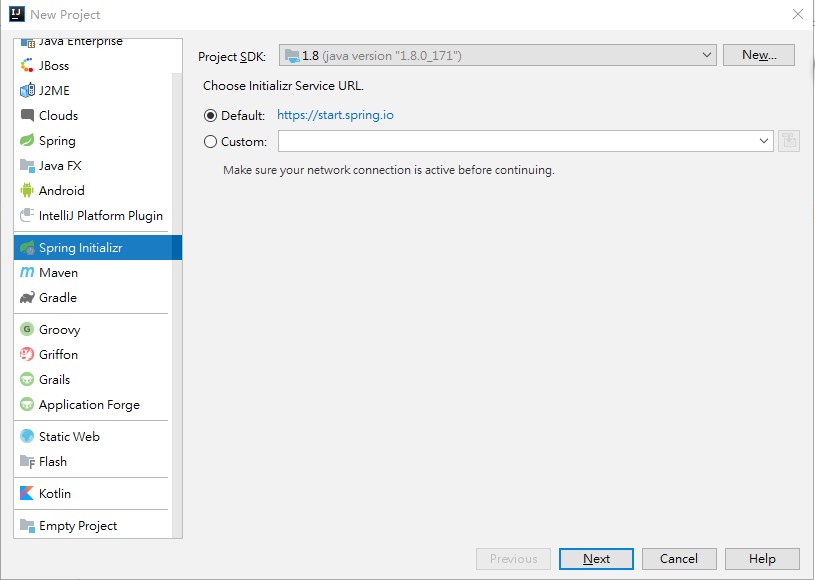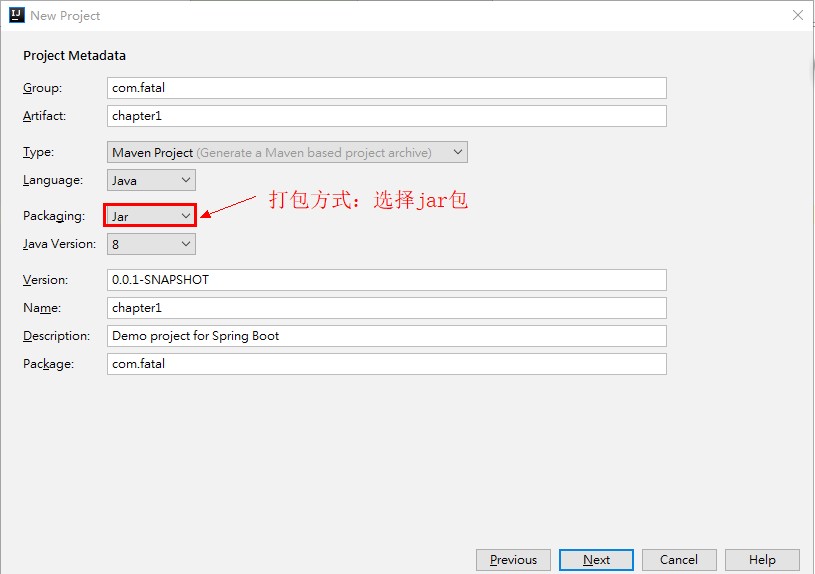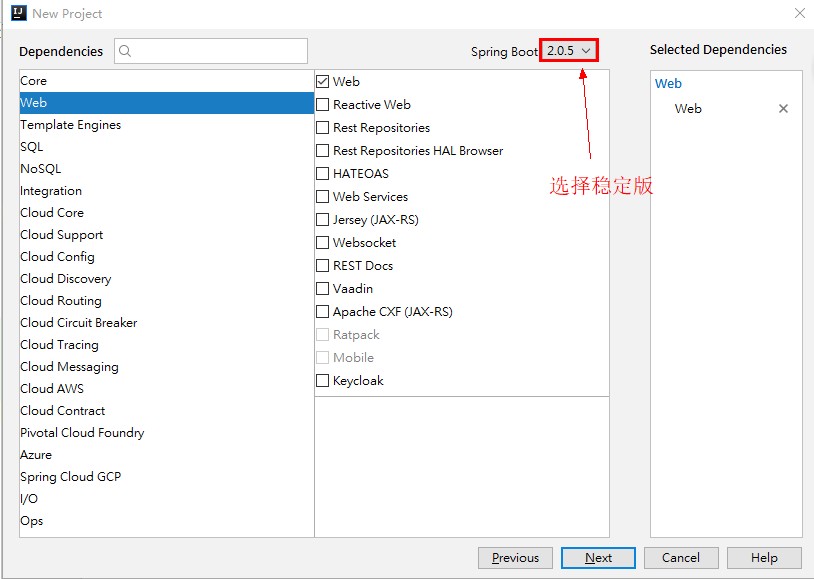SpringBoot是为了简化Spring应用的创建、运行、调试、部署等一系列问题而诞生的产物,自动装配的特性让我们可以更好的关注业务本身而不是外部的XML配置,我们只需遵循规范,引入相关的依赖就可以轻易的搭建出一个 WEB 工程
未接触 SpringBoot 之前,搭建一个普通的 WEB 工程往往需要花费30分钟左右,如果遇到点奇葩的问题耽搁的时间会更长一点,但自从用了SpringBoot 后,真正体会到什么叫分分钟搭建一个WEB,让我拥有更多的时间跟我的小伙伴们唠嗑了。使用 SpringBoot 后发现一切是如此的简单(还记得读书那会被JAR包,xml支配的恐惧吗,如今都可以说 good bye)

设计的目标
- 为所有使用
Spring的开发者提供一个更简单,快速的入门体验 - 提供一些常见的功能、如监控、WEB容器,健康,安全等功能
- 干掉XML,遵循规范,开箱即用
环境/版本一览:
- 开发工具:Intellij IDEA 2018.2.2
- springboot: 2.0.5.RELEASE
- jdk:1.8.0_171
- maven:3.3.9
开始搭建:
1、点击File -> Project
到这一步选择的时候,如图中选项的是Spring Initializr(官方的构建插件,需要联网),第二个是自己选择Maven构建,为了更好的适合初学者,我们将在本章用插件构建

2、填写项目基本信息
- Group: 组织ID,一般分为多个段,这里我只说两段,第一段为域,第二段为公司名称。域又分为
org、com、cn等等,其中 org为非营利组织,com为商业组织。如阿里、淘宝(com.alibaba/com.taobao) - Artifact: 唯一标识符,一般是项目名称

3、选择依赖
Spring Initializr 为我们提供了很多的选项,不同的选项有不同的作用,在初期我们只需要依赖Web 就可以了,选择好依赖包之后点击Next -> Finish

4、目录结果
1 | - src |
4.1、pom.xml
因为使用了 Spring Initializr 插件,所以如下的配置都不需要我们自己去写啦,需要注意的是版本要选择 RELEASE ,稳定版本BUG少
1 |
|
其它的依赖可以参考:官方文档
4.2、主函数入口
注意事项: 一个项目中切记不要出现多个 main 函数,否在在打包的时候 spring-boot-maven-plugin将找不到主函数(主动指定打包主函数入口除外…)
1 | package com.fatal; |
5、启动应用
三种方式
- 运行 main 方法
- 在 Terminal 中,进入项目根目录,输入
mvn spring-boot:run即可 - 在服务器部署运行时,先
mvn install打成 jar 包,然后java -jar xxx.jar来启动应用
6、全局配置文件(application.yml)
从启动日志中可以发现,SpringBoot 默认的端口是 8080 ,那么如果端口被占用了怎么办呢?不要慌,问题不大,配置文件分分钟解决你的困扰…
1 | 2018-9-19 21:23:11.235 INFO 11184 --- [ main] o.s.b.w.embedded.tomcat.TomcatWebServer : Tomcat started on port(s): 8080 (http) with context path '' |
修改默认配置 yml
1 | server: |
再次启动即可~~
7、测试(RESTful)
本次测试采用 junit 进行,当然也可以启动项目后直接访问 http://localhost:9090/chapter/demo1进行测试
1 | package com.fatal; |
拓展知识
自定义Banner
SpringBoot 启动的时候我们可以看到如下内容,这一块其实是可以自定义的哦,而且在 2.X 版本中,它支持的格式从文本扩展到banner.txt、banner.jpg、banner.gif、banner.jpeg 等等,只需要在 resouces 目录下添加指定命名的文件即可
1 | . ____ _ __ _ _ |
总结
SpringBoot的知识已经有前辈在我们之前探索了。比较喜欢的博主有:唐亚峰 | Battcn、方志朋的专栏、程序猿DD、纯洁的微笑。对这门技术感兴趣的可以去他们的博客逛逛。谢谢他们的分享~~
以上文章是我用来学习的Demo,都是基于 SpringBoot2.x 版本。
源码地址: https://github.com/ynfatal/springboot2-learning/tree/master/chapter1